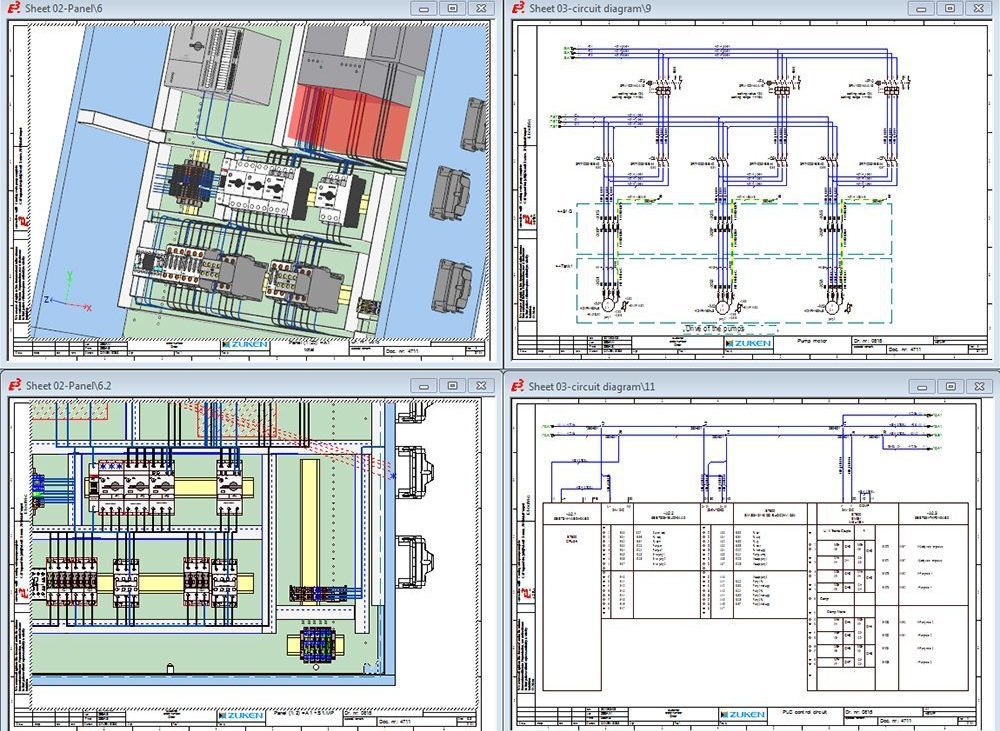Advanced Electrical Engineering Design Services for Residential and Industrial Needs
Advanced Electrical Engineering Design Services for Residential and Industrial Needs
Blog Article
Ingenious Electric Design Solutions for Modern Framework
As city environments expand progressively complicated, incorporating technologies such as wise grids and sustainable energy sources ends up being extremely important. These advancements not just guarantee to enhance power consumption yet also foster strength versus future needs.
Relevance of Ingenious Electric Design
Ingenious electric design plays a crucial duty in modern-day infrastructure, affecting not only performance however likewise sustainability. As cities evolve and the need for power rises, the demand for innovative electric systems becomes paramount. These systems need to not just meet present needs however additionally expect future development and technical improvements.
A well-executed electric design can considerably decrease power usage, therefore reducing operational expenses and decreasing environmental impact. By incorporating renewable resource resources, such as photovoltaic panels and wind generators, cutting-edge layouts can enhance energy freedom and resilience. Moreover, wise grid technologies enable for real-time monitoring and monitoring of energy circulation, optimizing efficiency and lowering waste.
Safety and security is one more important facet of electric design. Implementing rigorous criteria and innovative modern technologies can alleviate threats connected with electrical failings, making certain a secure environment for services and homeowners alike. In addition, cutting-edge styles assist in versatility, permitting infrastructures to integrate arising technologies effortlessly.
Secret Fads in Electric Design
As the landscape of electrical design proceeds to evolve, a number of crucial patterns are shaping the future of the sector. One considerable trend is the integration of smart innovation into electric systems. The expansion of the Internet of Things (IoT) has enabled real-time monitoring and control of electrical tools, enhancing effectiveness and helping with predictive maintenance.
Another trend is the growing focus on modular design. This method allows for scalable and adaptable services, enabling infrastructure to adjust to altering demands without extensive restorations. In addition, making use of sophisticated simulation tools and Structure Details Modeling (BIM) is coming to be significantly common, simplifying the design process and improving collaboration amongst stakeholders.
Additionally, advancements in materials scientific research are bring about the growth of lighter, a lot more durable, and energy-efficient components. This technology is particularly essential for high-performance structures and facilities projects.
Last but not least, there is a marked shift towards data-driven decision-making - electrical engineering design services. Leveraging data analytics aids designers optimize systems for performance and cost-effectiveness. Together, these patterns represent a transformative period in electrical design, improving capability, sustainability, and strength in contemporary infrastructure
Sustainable Energy Solutions
Lasting energy solutions are significantly ending up being a critical focus in electric design, reflecting a broader commitment to ecological obligation and source effectiveness. These solutions intend to reduce environmental impact while maximizing power usage in various frameworks, from residential structures to big industrial centers.
Among the foremost approaches includes the integration of renewable resource sources, such as solar panels and wind generators, into electric systems. This not just lowers dependency on nonrenewable fuel sources yet likewise improves energy resilience. In addition, cutting-edge power storage space systems, such as advanced batteries, allow effective management and distribution of energy, making certain that excess energy produced throughout top production can be utilized during high demand periods.
In addition, energy-efficient design practices are being taken browse around this site on to improve total system efficiency. This consists of using energy-efficient illumination, HVAC systems, and clever structure innovations that check and adapt energy use based upon occupancy and environmental conditions.
Smart Grid Technologies
The execution of her latest blog sustainable energy options normally brings about the expedition of wise grid modern technologies, which play a critical function in updating electric systems. Smart grids utilize progressed communication technologies and information analytics to enhance the dependability, effectiveness, and sustainability of power circulation. By incorporating digital innovation with typical grid facilities, these systems assist in real-time tracking, automated control, and enhanced decision-making capacities.
One of the essential functions of wise grids is their capacity to fit renewable resource resources, such as solar and wind power. This flexibility not just lowers dependence on fossil fuels but also enables for a more decentralized energy production model. Wise grids enable demand feedback programs, where customers can change their energy usage based on real-time prices, therefore advertising power preservation and minimizing peak tons needs.
Furthermore, clever grid innovations improve grid resilience by enabling quicker identification and resolution of blackouts, ultimately minimizing downtime. With predictive maintenance and analytics, utilities can maximize operations and boost service delivery. As cities and communities remain to advance, smart grid modern technologies are necessary for developing a lasting and reliable electrical framework that meets the needs of modern society.

Future-Proofing Infrastructure
To ensure long-term stability and versatility, future-proofing infrastructure is essential in the rapidly advancing landscape of electric design solutions. As technology developments and power needs shift, it is important that electric systems are designed with flexibility in mind. This requires incorporating scalable options that can accommodate future upgrades without necessitating extensive overhauls.

Additionally, sustainability should be a foundation of future-proofed styles. Using renewable power sources, such as solar and wind, and optimizing power performance lower dependence on nonrenewable fuel sources, straightening with global efforts to deal with environment adjustment.
Conclusion
By prioritizing flexibility, sustainability, and efficiency, these services resolve the advancing demands of power systems. The combination of wise grid technologies and sustainable power remedies boosts resilience and lowers functional expenses.
A well-executed electric design can substantially minimize power intake, thus decreasing operational prices and minimizing environmental influence. By incorporating renewable energy sources, such as solar panels and wind generators, ingenious layouts can improve energy freedom and resilience. In addition, innovative power storage space systems, such as innovative batteries, allow reliable monitoring and distribution of power, ensuring that excess power produced during optimal manufacturing can be made use of throughout high need durations.
Clever grids make it possible for need reaction programs, where customers can readjust their power use based on real-time prices, therefore advertising power conservation and reducing peak tons needs. (electrical engineering design services)
As modern technology developments and energy needs change, it is essential that electric systems are developed with flexibility in mind.
Report this page